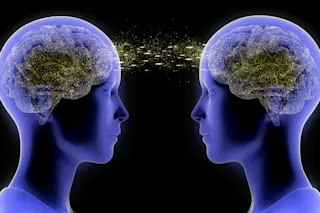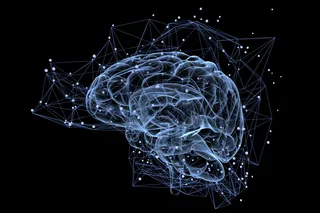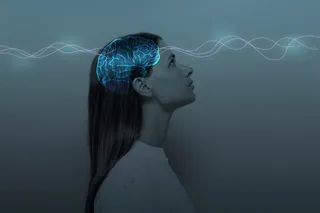The recent popularity of the podcast Telepathy Tapes highlights the concept of telepathy, the extra-sensory communication between people through thoughts. Nonverbal people with autism “possess gifts that defy conventional understanding,” including telepathy.
“For years, their parents and teachers have quietly witnessed these remarkable abilities, knowing that the time to share their truth would eventually come. But now, as the evidence mounts, the time has come to reveal what has been hidden in plain sight,” read the podcast website.
Except there is no scientific evidence to support telepathy, particularly in nonverbal communicators.
Telepathy has always been a controversial topic among scientific experts. Dr. Stuart Vyse is a psychologist specializing in superstition and other forms of irrational behavior and referred to the Telepathy Tapes in an article in Skeptical Inquirer as a “dangerous cornucopia of pseudoscience.” So, does telepathy exist in this scenario and what do the experts think of the concept?
The Origins of Telepathy
Renowned for his “thought-reading” demonstrations, 19th-century mentalist Washington Irving Bishop was known to locate objects through what some deemed to be telepathy.
During his performances, Bishop would ask a member of the audience to hide an object in a secret location unknown to the performer. He would then grab the hider’s hand or wrist while asking them to recall the location of the object.
Except Bishop never claimed to have supernatural ability. Rather, he publicly described his work as “muscle reading,” in which he was guided by unconscious physiological changes and body cues in people who had hidden the object.
Nonetheless, acts like Bishop’s helped to stir an appetite for the spiritualism movement, which saw, in 1882, the coining of the term telepathy by the psychologist Frederic Myers.
Read More: A Century After The EEG Was Discovered, It Remains A Crucial Tool For Understanding The Brain
Controversy of Facilitated Communication
Throughout the podcast series, director and host Ky Dickens speaks with caretakers of nonverbal children with autism who claim they can communicate with their child solely through the mind. Parents assist their children in a variety of tasks, said to prove their telepathic connection, such as guessing a randomly selected word or number the facilitator is thinking about.
The podcast employs a type of communication known as facilitated communication. It's a technique used on individuals with disabilities that uses a facilitator to physically touch the person with limited functional spoken or written language abilities, helping them to spell out words and sentences on a keyboard or similar device.
Many organizations oppose the use of facilitated communication, including the American Academy of Child and Adolescent Psychiatry, the American Psychological Association, and the American Academy of Pediatrics.
The Association for Science in Autism Treatment issued a statement, expressing deep concern about the spreading of “misinformation about the authenticity of facilitated communication and the presence of paranormal abilities in nonspeaking autistic individuals.”
“Pseudoscientific practices have far-reaching and potentially dangerous consequences that can silence nonspeaking autistic individuals and prevent them from accessing interventions proven to support them,” wrote the group.
Telepathic Communication or Influence?
Nonverbal or nonspeaking autism refers to individuals with limited or no use of spoken language. In many instances, these individuals can still think and communicate, but in other ways, such as gestures, sign language, or through technology like speech-generating devices.
When another person is brought into the conversation, they may unknowingly influence the responses of the nonverbal person. For example, if the parent is holding the wrist of a nonspeaking person as they type on the keyboard, they may subconsciously influence what letters or words are being chosen.
“That involvement of another person just contaminates the enterprise and especially given that the helper always knows how to type and what the words are, they could be authoring the whole thing,” says Vyse, adding that he does not believe the parents are intentionally manipulating the outcomes of these so-called tests.
Scientists like Vyse call for a more scientific approach to understanding and supporting nonverbal children with autism, highlighting the importance of recognizing their true nature and providing appropriate education.
Article Sources
Our writers at Discovermagazine.com use peer-reviewed studies and high-quality sources for our articles, and our editors review for scientific accuracy and editorial standards. Review the sources used below for this article:
Skeptical Inquirer. The Telepathy Tapes: A Dangerous Cornucopia of Pseudoscience
American Psychological Association. Telepathy through contact.
Association for Science in Autism Treatment. ASAT Responds to The Skeptical Inquirer: “The Telepathy Tapes: A Dangerous Cornucopia of Pseudoscience”















